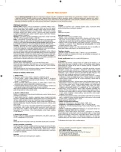The risk factors for pelvic floor trauma following vaginal delivery
Authors:
I. Michalec 1; M. Tomanová 1
; M. Navratilova 1; O. Šimetka 1,2; M. Procházka 3,4
Authors place of work:
Porodnicko-gynekologická klinika FN, Ostrava, přednosta doc. MUDr. V. Unzeitig, CSc.
1; Katedra chirugických oborů LF Ostravské univerzity, Ostrava
2; Porodnicko-gynekologická klinika LF UP a FN, Olomouc, přednosta prof. MUDr. R. Pilka, Ph. D.
3; Ústav porodní asistence FZV LF UP, Olomouc, přednosta doc. MUDr. M. Procházka, Ph. D.
4
Published in the journal:
Ceska Gynekol 2015; 80(1): 11-15
Summary
Objective:
The evaluation of the risk and protective factors for pelvic floor trauma in relation to vaginal delivery.
Design:
Review.
Setting:
Department of Obstetrics and Gynecology, University Hospital of Ostrava.
Methodology and results:
The aim was to provide a comprehensive survey of studies focused on risk factors for pelvic floor trauma following vaginal delivery; and to constitute the relationship between the risk and protective factors and levator ani injury. To state the prognosis of the pelvic floor injury before a child delivery is difficult and almost impossible, but it has been assumed that an operative vaginal delivery (obstetrical forceps) represents a significant risk factor for avulsion. The change in obstetric practice can prevent the injury and thus to reduce an adverse effect.
Conclusions:
Pregnancy and the methods of childbirth are important factors with an impact on pelvic floor injury, potentially contributing to the development of pelvic organ prolapse, and stress and anal incontinence. The recognition of the factors, the proper training of medical staff in the management of labour, and subsequently the proper treatment of perineal tears should prevent pelvic floor injury.
Keywords:
labour, avulsion, perineal tears
Zdroje
1. Bo, K., Fleten, C., Nystad, W. Effect of antenatal pelvic floormuscle training on labor and birth. Obstet Gyn, 2009, 113, p. 1279–1284.
2. Dietz, HP., Lanzarone, V. Levator trauma after vaginal delivery. Obstet Gyn, 2005, 106, p. 707–712.
3. Dietz, HP., Lekskulchai, O. Older age at first delivery is associated with major levator trauma. Int Urogynecol J, 2006, 17 (S2), p. S148.
4. Fitzpatrick, M., O’Brien, C., O’Connell, PR., et al. Patterns of abnormal pudendal nerve function that are associated with postpartum fecal incontinence associated with postpartum fecal incontinence. Am J Obstet Gynecol, 2003, 189, p. 730–735.
5. Guiney, HL. Post-partum observation of pelvic tissue damane. Am J Obstet Gynecol, 1943, 46, p. 457–466.
6. Chaliha, C., Sultan, AH., et al. Anal function: effect of pregnancy and delivery. Am J Obstet Gynecol, 2001, 185, p. 427.
7. Chiaffarino, F., Chatenoud, L., Dindelli, M., et al. Repro-ductive factors, family history, occupation and risk of urogenital prolapse. Eur J Obstet Gyn Reprod Biol, 1999, 82, p. 63–67.
8. Kearney, R., Miller, JM., Delancey, J., et al. Obstetric factor associated with levator ani muscle injury after vaginal birth. Obstet Gyn, 2006, 107, p. 144–149.
9. Krofta, L., Otcenasek, M., Kasikova, E., et al. Pubo-coccygeus-puborectalis trauma after forceps delivery: evaluation of the levator ani muscle with 3D/4D ultrasound. Int Urogynecol J, 2009, 20, p. 1175–1181.
10. Lavy, Y., Sand, KP., Kaniel, IC., et al. Can pelvic floor injury secondary to delivery be prevented? Int Urogynecol J, 2012, 23, p. 165–173.
11. Mant, J., Painter, R., Vessey, M. Epidemiology of genital prolapse: observations from the Oxford Family Planning Association Study. BJOG, 1997, 104, p. 579–585.
12. Rortveit, G., Hunskaar, S. The association between the age at the first and last delivery and urinary incontinence. Neurol Urodyn, 2004, 23, p. 562–563.
13. Schiessl, B., Janni, W., Jundt, K., et al. Obstetrical parameters in fluencing the duration of the second stage of labor. Eur J Obstet Gyn Reprod Biol, 2005, 118, p. 17–20.
14. Shek, KL., Dietz, HP., Clarke, B. Biometry of puborectal muscle and levator hiatus by 3D pelvic floor ultrasound. Neurol Urodynl 2004, 23, p. 577–578.
15. Shek, KL., Dietz, HP. Intrapartum risk factors for levator trauma. Intern J Obstet Gynecol, 2010, p. 1485–1492.
16. Snopka, SJ., Swash, M., Henry, MM., et. al. Risk factors in childbirth causing damage to the pelvic floor innervation. Int J Colorectal Dis, 1986, 1, p. 20–24.
17. Svabik, K., Shek, KL., Dietz, HP. How much does the levator hiatus have to stretch during childbirth? BJOG, 2009, 116, p. 1657–1662.
18. Toozs-Hobson, P., Balmforth, J., Cardozo, L., et al. The effect of mode of delivery on pelvic floor functional anatomy. Int Urogynecol J, 2008, 19, p. 407–416.
19. Viktrup, L., Lose, G. The risk of stress incontinence 5 years after first delivery. Am J Obstet Gynecol, 2001, 185, p. 82–87.
20. Willis, A., Fardi, A., et al. Childbirth and incontinence: a prospective study on anal sphincter morphology and function before and early after vaginal delivery. Langenbecks Arch Surg, 2002, 387, p. 101.
Štítky
Dětská gynekologie Gynekologie a porodnictví Reprodukční medicínaČlánek vyšel v časopise
Česká gynekologie

2015 Číslo 1
- Horní limit denní dávky vitaminu D: Jaké množství je ještě bezpečné?
- Dlouhodobé užívání dienogestu v terapii endometriózy
- Moje zkušenosti s Magnosolvem podávaným pacientům jako profylaxe migrény a u pacientů s diagnostikovanou spazmofilní tetanií i při normomagnezémii - MUDr. Dana Pecharová, neurolog
- Isoprinosin je bezpečný a účinný v léčbě pacientů s akutní respirační virovou infekcí
- Postupné vysazování inhibitorů protonové pumpy
Nejčtenější v tomto čísle
- 4G/4G polymorfismus genu pro inhibitor aktivátoru plazminogenu 1 (PAI-1) jako nezávislý rizikový faktor placentární insuficience, způsobující u plodu hemodynamickou centralizaci
- Přední poševní plastika v lokální anestezii
- Rizikové faktory poškození svalů pánevního dna v souvislosti s vaginálním porodem
- Užití transuretrální aplikace polyacrylamid hydrogelu (Bulkamidu®) k léčbě recidivující stresové incontinence moči po selhání efektu páskových operací
